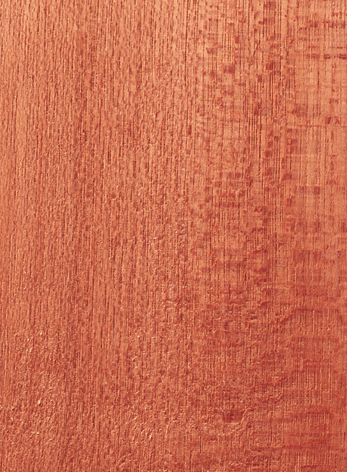 |
|
| Species | Test Condition | Modulus of Elasticity(MPa) | Modulus of Rupture(MPa) | Compression parallel to grain (MPa) | Compression perpendicular to grain (MPa) | Shear strength (MPa) |
| S. acuminata | Green | 10,500 | 54 | 27.4 | 2.41 | 6.3 |
| Air dry | - | - | - | - | - | |
| S. curtisii | Green | 12,800 | 69 | 36.3 | 3.86 | 7.2 |
| Air dry | 13,900 | 90 | 45.4 | 5.03 | 8.0 | |
| S. pauciflora | Green | 12,700 | 71 | 37.7 | 3.45 | 7.5 |
| Air dry | - | - | - | - | - | |
| S. platyclados | Green | 11,300 | 58 | 30.0 | 2.69 | 6.3 |
| Air dry | 12,100 | 77 | 39.6 | 4.14 | 8.7 | |
| S. singkawang | Green | 10,100 | 55 | 31.8 | 3.03 | 7.6 |
| Air dry | 11,200 | 74 | 38.8 | 2.97 | 8.3 |
| Species | Test Condition | Sawing | Planing | Boring | Turning | ||||
| Re-sawing | Cross Cutting | Ease of planing | Quality of finish | Ease of boring | Quality of finish | Ease of turning | Quality of finish | ||
| S. acuminata (part only; the darker coloured varieties) | Green | easy | easy | easy | smooth | easy | smooth | - | - |
| Air dry | easy | easy | easy | smooth | easy | smooth | easy | moderately smooth | |
| S. curtisii | Green | easy | easy | easy | smooth to slightly smooth | easy | smooth | - | - |
| Air dry | easy | easy | easy | moderately smooth | easy | smooth | - | - | |
| S. pauciflora | Green | easy | easy | easy | smooth | easy | smooth | - | - |
| Air dry | easy | easy | easy | smooth | easy | smooth | easy | smooth | |
| S. platyclados | Green | very easy | easy | easy | smooth | moderately easy | smooth | - | - |
| Air dry | easy | easy | easy | smooth | moderately easy | smooth | easy | smooth | |
| S. singkawang | Green | easy | easy | easy | smooth | easy | rough | - | - |
| Air dry | easy | easy | easy | smooth | easy | slightly rough | easy | smooth | |
| Species | Time to air dry (months) | Remarks | |
| 13 mm thick boards | 38 mm thick boards | ||
| S. curtisii | 2 | 3 | Fairly fast drying; free from seasoning defects. |
| S. pauciflora | 2.5 | 4 | Fairly fast drying; free from seasoning defects. |
| S. platyclados | 2 | 4 | Fairly fast drying; free from seasoning defects. |
| S. singkawang | 3 | 5 | Fairly slow drying rate; free from seasoning defects. |
| Moisture Content (%) | Temperature (Dry Bulb) | Temperature (Wet Bulb) | Relative Humidity (%) (approx.) | ||||
| � F | � C | � F | � C | ||||
| Green | 120 | 48.5 | 111 | 44.0 | 75 | ||
| 60 | 120 | 48.5 | 109 | 43.0 | 70 | ||
| 40 | 125 | 51.5 | 109 | 43.0 | 60 | ||
| 30 | 130 | 54.5 | 109 | 43.0 | 50 | ||
| 25 | 140 | 60.0 | 115 | 46.0 | 45 | ||
| 20 | 155 | 68.0 | 124 | 51.0 | 40 | ||
| 10 | 170 | 76.5 | 136 | 58.0 | 40 | ||
| Species | Shrinkage (%) (Green to air dry) | Remarks | |
| Radial | Tangential | ||
| S. curtisii | 2 | 4.1 | High shrinkage |
| S. pauciflora | 1.7 | 2.9 | High shrinkage |
| S. platyclados | 2.1 | 4.4 | High shrinkage |
| S. singkawang | 1.1 | 3.4 | Fairly high shrinkage, especially in the tangential direction. |

 Indonesia
Indonesia